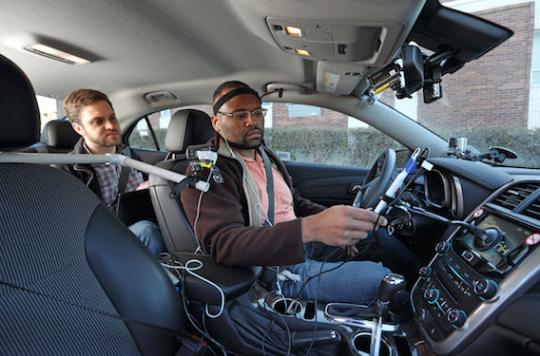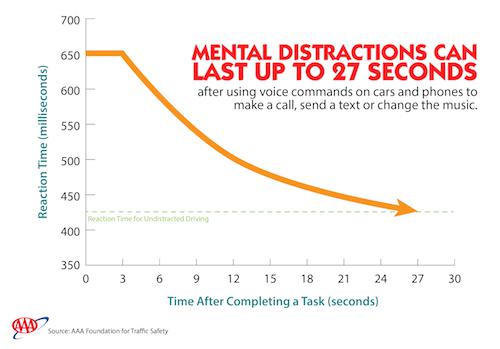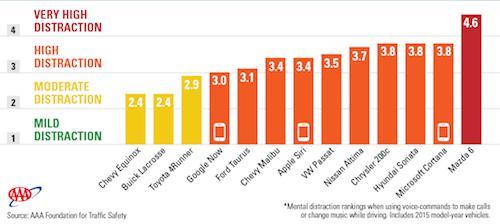Voice control is legal but not necessarily safe. After use, a driver takes up to 27 seconds to regain full attention.

You have certainly come across these strange individuals who dialogue with their operating system. No, it’s not the futuristic world that Spike Jonze depicts in his movie Her, but of today’s world. Between smartphones and “smart cars”, voice control is in full development. Even though the government has banned the hands-free kit, it has let the centralized car system pass. But contrary to what one might think, talking directly to your car does not eliminate all sources of distraction.
Three soccer fields
Some 320 participants bravely took the wheel for this study conducted by researchers from Utah (United States). 257 of them drove 10 vehicle models produced in 2015 with centralized voice control. The others used 3 types of smartphone operating systems with voice control (Cortana, Google Now, Siri). And those who imagine that talking to the device helps to be less distracted may be disappointed: it takes 15 to 27 seconds to recover correct concentration depending on the device. This applies even when stopped at a red light.

“Most people think, ‘I’ll hang up and I can go.’ But this is not the case. We can see that it takes a long time to regain his full attention,” explains David Strayer, who coordinated the work. But it is on the way that the risk is the highest. At 40 km/h, a driver covers the equivalent of three football pitches before regaining full concentration.
Better get by
The work has even made it possible to establish a distinction between the operating systems that disturb the pilots the most and the least. The central control of the Mazda 6 is by far the worst student, followed closely by the Cortana smartphone system. The “Apple maniacs” will for once have to put their pride in their pocket, because it is the Google Now system that disturbs the least driving compared to Siri. On the other hand, the least annoying devices remain those which are integrated into cars.

In the current state of things, it is better to do without voice control, concludes David Strayer all the same. “Just because these systems are built into the car doesn’t mean it’s a good idea to use them behind the wheel. They greatly disrupt driving, they encourage errors and they can be very frustrating. And annoyance at the wheel is not known to help reduce accidents.
.














